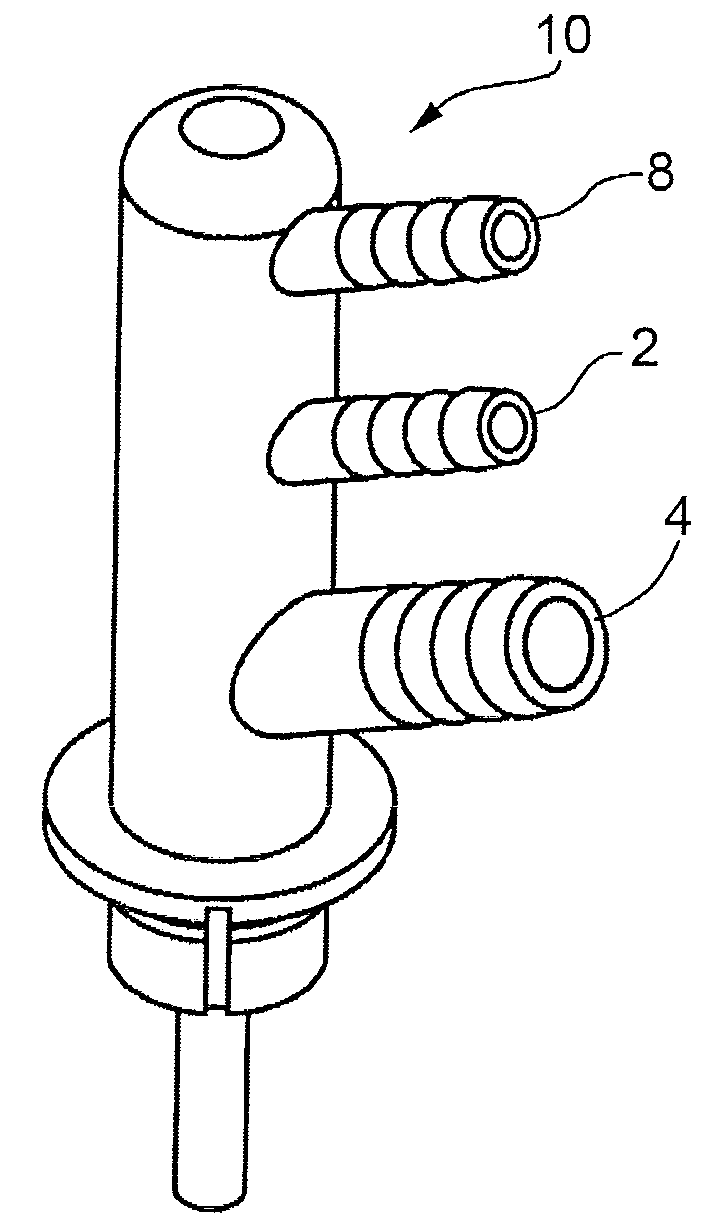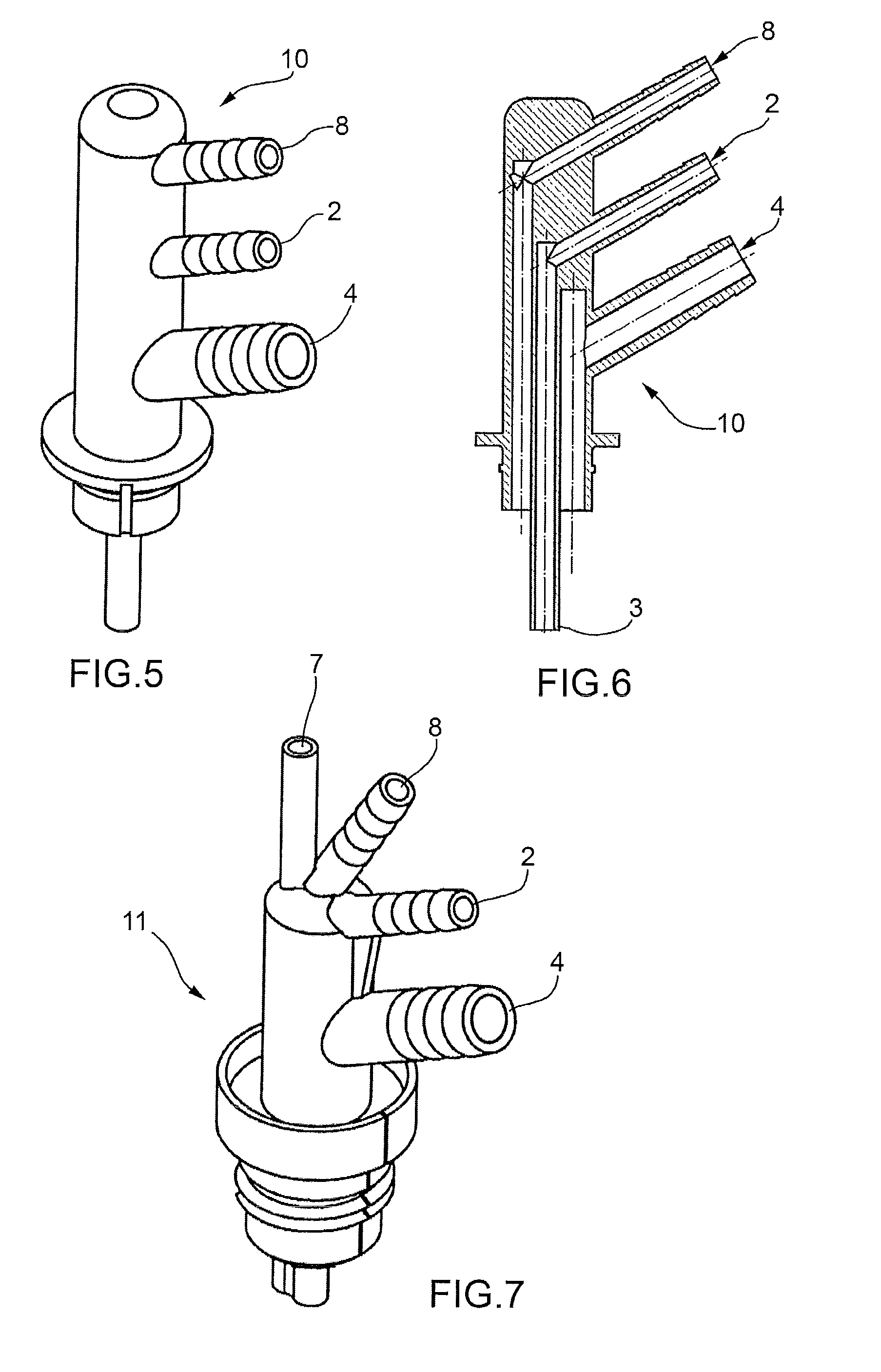Plant for electrochemical forming of lead-acid batteries
a lead-acid battery and electrochemical technology, applied in the field of lead-acid battery electrochemical forming plants, can solve the problems of increasing the time needed for forming, affecting the forming speed of battery cell plates, and limiting the possibility of cooling the electrolyte, so as to reduce the time necessary for forming, the effect of reducing the risk of cells being exploded and forming faster
- Summary
- Abstract
- Description
- Claims
- Application Information
AI Technical Summary
Benefits of technology
Problems solved by technology
Method used
Image
Examples
Embodiment Construction
[0036]FIG. 5 to 7 illustrate some preferred embodiments of plugs to be fitted to the opening of the cells of lead-acid batteries.
[0037]FIGS. 5 and 6 illustrate a plug to be fitted to the opening of cells of lead-acid batteries according to this invention, indicated in its entirety by numeral 10. In a similar manner to the prior art plugs illustrated in FIGS. 1 to 4, and for this reason indicated with the same reference number, the plug 10 comprises a first inlet duct 2, through which the electrolyte is introduced inside the cell, and a second outlet duct 4 for the removal of the electrolyte from the cell.
[0038]The plug 10 also comprises the sealing means 5 to form a seal and to keep it anchored to the top opening of the cells.
[0039]According to FIGS. 6 and 8, the duct 2 has an end 3 which extends inside the cell to a level lower than the inner end of the outlet duct 4.
[0040]In the same manner as the prior art plugs, the electrolyte inside the external circuit is introduced into the ...
PUM
| Property | Measurement | Unit |
|---|---|---|
| pressure | aaaaa | aaaaa |
| atmospheric pressure | aaaaa | aaaaa |
| concentration | aaaaa | aaaaa |
Abstract
Description
Claims
Application Information
 Login to View More
Login to View More - R&D
- Intellectual Property
- Life Sciences
- Materials
- Tech Scout
- Unparalleled Data Quality
- Higher Quality Content
- 60% Fewer Hallucinations
Browse by: Latest US Patents, China's latest patents, Technical Efficacy Thesaurus, Application Domain, Technology Topic, Popular Technical Reports.
© 2025 PatSnap. All rights reserved.Legal|Privacy policy|Modern Slavery Act Transparency Statement|Sitemap|About US| Contact US: help@patsnap.com



